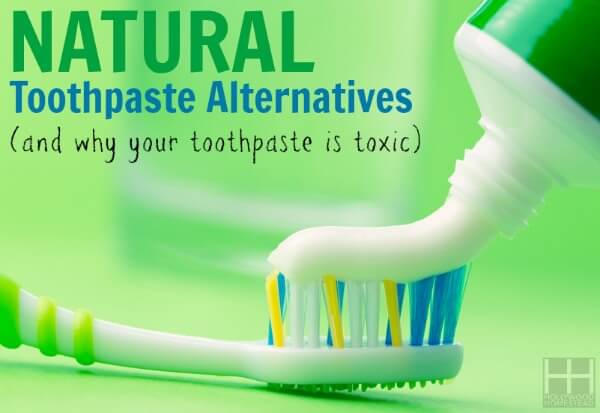 Today, natural toothpastes are all the rage. Your local health food store probably has an entire shelf devoted to them. But you might be surprised to learn that most of these “natural” toothpastes aren’t doing your teeth any favors. Here, we will talk about about how marketers tricked us into using toothpaste, the harmful ingredients in conventional toothpaste, and what natural toothpaste alternatives you should be using instead.
Today, natural toothpastes are all the rage. Your local health food store probably has an entire shelf devoted to them. But you might be surprised to learn that most of these “natural” toothpastes aren’t doing your teeth any favors. Here, we will talk about about how marketers tricked us into using toothpaste, the harmful ingredients in conventional toothpaste, and what natural toothpaste alternatives you should be using instead.
Why Do We Brush Our Teeth Anyway?
Before we get into what natural toothpaste alternative you should be using, it is important to look a bit at the history of how we started using toothpaste in the first place. The book The Power of Habit gives a great description of how a man named Claude Hopkins made a fortune by convincing people they needed to brush their teeth with toothpaste.
In the 1900s, pretty much no one brushed their teeth. Then a toothpaste company called Pepsodent hired Claude Hopkins to market their product. He realized that, to get people using toothpaste, he would have to find a trigger for its daily use. Hopkins then stumbled across a reference to the mucin plaques on teeth, which he renamed “film.”
As part of the Pepsodent marketing campaign, Hopkins created ads which told people to run their tongues across their teeth: “You’ll feel a film—that’s what makes your teeth look ‘off color’ and invites decay.”
Advertising is powerful stuff. Of course people ran their tongues across their teeth. Our teeth are naturally slippery from saliva, so it does feel like a film is there. This was the “cue” which would trigger them to brush their teeth. They would then be rewarded with beautiful teeth (or, in this case, what they thought would be beautiful teeth). In a nutshell, this is the habit loop: cue, routine, and reward. The habit loop dictates many of our actions. Within a decade, Hopkins had more than half the population brushing their teeth!
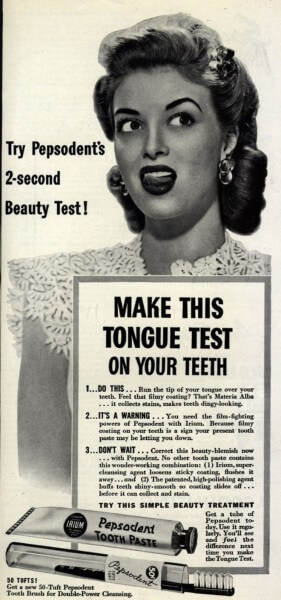
Oral Health Depends On More than Toothpaste
The reason that Hopkins toothpaste advertising campaign was so effective is it go people thinking that they could beautify their teeth just by brushing them with toothpaste. But oral health is a lot more complex than this.
You might be surprised to learn that dental decay is a fairly recent development, at least as far as the history of our species goes.
According to one report, ancient hunter-gathers had cavities in about 14% of their teeth, and some had virtually no cavities at all. Then, when agriculture took hold about 10,000 years ago, dental decay suddenly became rampant. Ancient farmers had cavities in about 48% of their teeth!
What does agriculture have to do with dental health? Well, we were never meant to eat grains. Our teeth are always in a state of mineralization and demineralization. With proper nutrition, our teeth can often heal themselves. But, when we eat grains, our saliva becomes acidic (due to certain bacteria which eat carbohydrates which then ferment and produce acids). In an acidic environment, our saliva can’t protect our teeth and they start to break down faster than we can rebuild them. (Source)
Weston A. Price’s Research On Dental Health
In the early 1900s, a dentist named Weston A. Price realized something was wrong. When he looked into his patients’ mouths, he found rampant tooth decay. This was usually also accompanied by a myriad of other problems, like arthritis, diabetes, and chronic fatigue. Price got the crazy idea (at least it was crazy at the time) that tooth decay might be a dietary problem. He decided to travel to remote parts of the world to study primitive populations and see how their health compared.
What Price found was that the “primitive” people, who did not have access to Hopkin’s Pepsodent toothpaste or other western novelties, often had perfectly straight, white teeth. It wasn’t just genetics either. In peoples who had come into contact with missionaries and had abandoned their traditional diets, their perfect teeth then began to resemble those of people in civilized cultures: rampant with decay.
As a result of his research, Price concluded that dental health was determined by diet. In particular, he found that these 3 aspects were vital for dental health:
- Having enough minerals in the diet (essential for remineralization of teeth)
- Having enough fat-soluble vitamins in the diet, such as A, D, E, and K (essential for absorption of minerals)
- How readily the body is absorbing those vitamins and minerals (which I’ve talked a lot about in the gut section of my eBook The Gelatin Secret)
I mention all this in order to tell you that, no matter what type of fancy organic natural toothpaste you use, no matter how many times per day you are brushing, you will not be able to have healthy teeth unless you eat a healthy diet!
Diet for Tooth Decay
Modern dentistry doesn’t have it all wrong: you should avoid sugars if you want to prevent cavities (you should avoid sugar anyway, not just for dental health!). But dentists usually just tell you what not to eat, and not the many things you should be eating to improve your dental health and prevent cavities.
Keep in mind that tooth enamel has the highest concentration of minerals in the entire body. The key minerals are calcium, iron, magnesium, copper, manganese, and phosphorus. One great way to get these minerals is to consume bone broth. You can find my super easy instructions for making bone broth here. According to the great book Cure Tooth Decay by Ramiel Nagel, fish broth is the best broth for curing tooth decay.
It is always best to get minerals through food. But, to give your teeth an extra boost of minerals and speed up the remineralizing process, you can also make your own natural remineralizing toothpaste.
As for fat-soluble vitamins, like A, D, and K2 which most of us are deficient in, I am a huge advocate of fermented cod liver oil since it is a real food source of these vitamins. I take this brand daily and it has done wonders for me.
Why Conventional Toothpastes Are Terrible for Your Teeth!
Everyone could probably boost their diet a bit in order to improve their dental health (and overall health). Even with this step, you should still ditch your conventional toothpaste. That’s right. Throw those tubes of Colgate, Crest, and even the “natural” Tom’s toothpaste in the trash!
There are way too many bad ingredients in conventional toothpaste to even begin to address the problem here. To give one example, Colgate-Palmolive (which controls 35% of the toothpaste market in the US) uses a patented formula for gingivitis which contains triclosan. When it comes in contact with chlorine in our water supply, a reaction occurs and it turns into chloroform. The chemical reaction which occurs in your mouth is shockingly similar to that of Agent Orange! Triclosan is linked to cancer, growth malformations, premature births, and other problems.
Another common ingredient in toothpaste (including many “natural” toothpastes like Tom’s of Maine) is Sodium Lauryl Sulphate. It is what makes toothpaste foam in your mouth. SLS is also linked to cancer, skin and eye irritation (which obviously can’t be good for your gums), developmental and reproductive toxicity, endocrine disruption, cellular changes, and more. By the way, SLS is found in pretty much all shampoos, which is one reason why I ditched shampoo.
And Toothpaste Isn’t Even Helping Your Teeth!
Some of us might be willing to put up with toothpaste toxicity in exchange for having brilliantly white teeth (just look what people do to themselves with Botox to have wrinkle-free skin) But it turns out that conventional toothpaste may be causing more harm than good.
According to a 33-year study, “toothpaste abuse” is one of the leading causes of dental abrasions. Basically, people mistakenly think that brushing with toothpaste will make their teeth whiter. So they brush too often and with too much toothpaste. The toothpaste wears down their tooth enamel, which is what should be protecting them from cavities. Without the enamel, their teeth are subject to caries and become a darker color (due to the dentin under the enamel).
Interestingly, brushing alone does not cause the same amount of wear on teeth. In one study, a group brushed with just water and another group brushed with toothpaste. The toothpaste group had considerably more wear on their enamel. (Source)
Brush Your Teeth – But Be Smart About It
I’m not saying that you should give up on brushing your teeth. Brushing your teeth does help remove food from your teeth so bacteria doesn’t attack it and form acids which will then wear down your teeth and I still brush twice daily and can’t imagine going to bed without brushing (guess the power of habit really worked on me!). But, if you are going to brush your teeth, you should be smart about it.
- Don’t brush for at least 30 minutes after eating sugary or acidic foods (including fruits): Sugars and acids soften your tooth enamel. If you brush right after eating these foods, you could damage your enamel. If you must clean your teeth after eating, just rinse.
- Don’t give your kids fluoride toothpaste: Fluoride might help prevent cavities, but it is terrible for your body if ingested. Fluoride is linked to numerous health problems, including rashes, impaired glucose metabolism (think childhood diabetes and obesity), and can even cause death. That is why the FDA requires a poison warning on every tube of toothpaste which contains fluoride. Kids’ toothpaste is usually flavored, so kids have a tendency to swallow it instead of spitting it out. Oh, and if you ingest fluoride, it causes Enamel fluorosis – a condition in which whitish/clear spots appear on the teeth. In severe cases, the teeth turn brown!
- Choose a natural toothpaste, preferably rich in minerals: At the very least, you should be using a toothpaste which is free of harmful chemicals like triclosan, Sodium Lauryl Sulphate, and saccharin. You can read more about toothpaste ingredients to avoid here. Instead of just avoiding bad ingredients, you’d be better off choosing a natural toothpaste which will help remineralize your teeth. I make some recommendations below.
Natural Toothpaste Alternatives
Here are three natural toothpaste alternatives that you can try to get healthier teeth and gums.
1. Oil Pulling
Oil pulling is a traditional Ayurvedic remedy for preventing tooth decay, bad breath, bleeding gums, and for strengthening teeth. Basically, the practice involves swishing a tablespoon of oil (coconut, sesame or olive oil) in your mouth for about 5-20 minutes (I’m in the habit of doing it when I shower). The oil kills bacteria and helps remove toxins. Oil pulling hasn’t been studied that much but there is evidence which shows it reduces cavities and gingivitis. I’ve found that flossing immediately after oil pulling is very helpful for removing plaque.
***You should still brush your teeth even if you are doing oil pulling!
2. Make Your Own Remineralizing Toothpaste
I am all about saving money and a bit of a control freak about ingredients (ahem), so I began making my own toothpaste a while back. I’ve had great success with this toothpaste recipe, which will help remineralize your teeth. Thanks to this toothpaste, and a diet rich in nutrients like bone broth and gelatin, I haven’t had a cavity in years and those whitish spots on my teeth are gone.
The recipe consists of various minerals, which help remineralization. The xylitol in the recipe is good for preventing bacteria from forming acids, hardening the lining of untreated cavities, and improving remineralization of teeth. The coconut oil acts as a base and also helps kill bacteria. Peppermint oil cleans the mouth, reduces gum inflammation and will give you that minty fresh feeling you’re probably after. 🙂
Find the recipe for remineralizing toothpaste here.

3. Good Brands of Natural Toothpastes
If you don’t want to make your own toothpaste there are some good brands out there you can order. They are all free of harmful ingredients and rich in natural ingredients which will protect your teeth and aid in remineralization. Some of them have emulsifiers like carageenan which I avoid in foods but since we’re spitting toothpaste out, not swallowing, I’m not worried. (My kids are ages 4 and above, if you have toothpaste swallowers you might make a different choice).
NOW Foods Xyliwhite Toothpaste
Redmond Earthpaste Natural Toothpaste
OraWellness Healthy Mouth Blend
Primal Life Organics Dirty Mouth Tooth Powder
Avistar Natural Teeth Whitener and Detoxifier
I recently learned about this toothpaste from a friend. The thing that sets Avistar apart from other natural toothpaste brands is that it is made from high quality ingredients with a smooth feel. Baking soda in Avistar natural toothpaste also helps whiten and remove stains from coffee, tea, and wine.
You can buy Avistar toothpaste HERE.
Now I’d love to hear from you. What’s your favorite toothpaste and why?
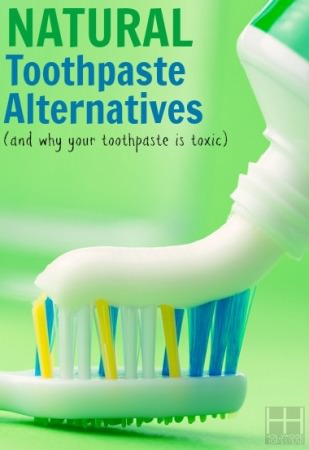
Latest posts by Sylvie McCracken (see all)
- Treating H. Pylori (Part 3): What H. Pylori Does to the Body - August 8, 2022
- Treating H. Pylori (Part 2): How H. Pylori is Contracted - August 3, 2022
- Understanding Beef Labels: Organic, Pastured, Grass-Fed & Grain-Finished - July 25, 2022
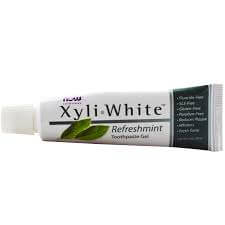
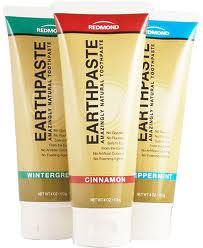
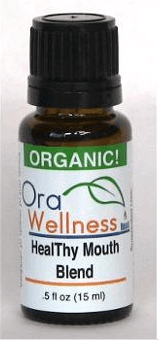
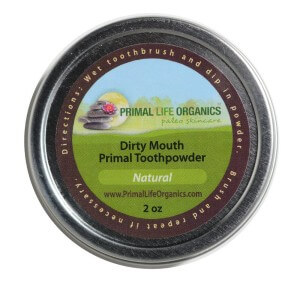
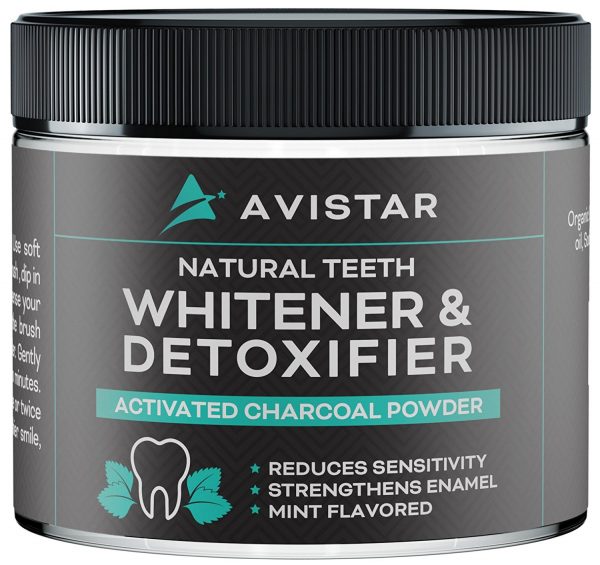
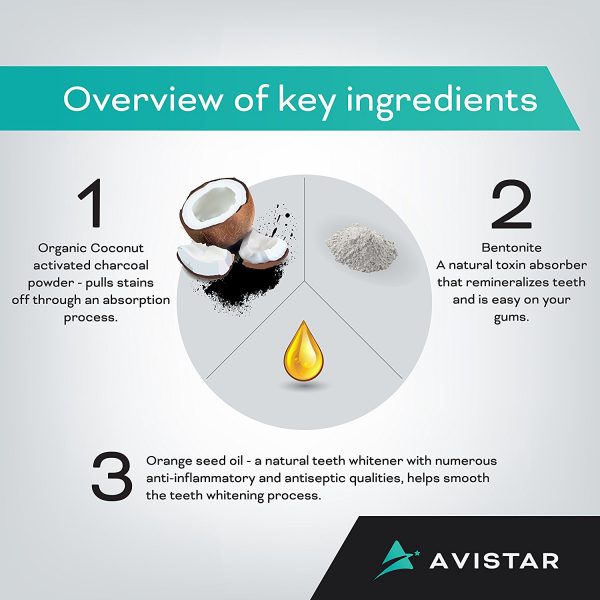
My favorite toothpaste is alkalizing, clay based, and doesnt contain xylitol (which some people are allergic to and kills dogs) and it comes in glass. Krista’s Natural Products Toothpaste
Thanks for sharing, Bill! Not familiar with that one 🙂
I believe this! I fell into a deep depression and I and actually brushed my teeth (sounds disgusting) maybe twice a week for 6 months. I just had a dental checkup and I actually have the healthiest and whitest teeth I’ve ever had. Those chemicals do terrible things to your teeth!
I’ve used earth paste for awhile but realized a lead warning on the tube… Any thoughts?
Hi Bob, each name is a live link to Amazon or other online stores that currently stock them. Hope that helps!
Hmmm I don’t have a Whole Earth foods store near by where I can get one of these , so where can you find any of these.???
I’m glad I use Xyli-White. I was happy to see you recommend it.
Hmmm I don’t have a Whole Earth foods store near by where I can get one of these , so where can you find any of these.???
Hi Bob, each name is a live link to Amazon or other online stores that currently stock them. Hope that helps!
My favorite toothpaste is Forever Bright Toothgel. It’s made with aloe and bee propolis (the propolis helps to disinfect the mouth).
I’m glad I use Xyli-White. I was happy to see you recommend it.
I’m glad I use Xyli-White. I was happy to see you recommend it.